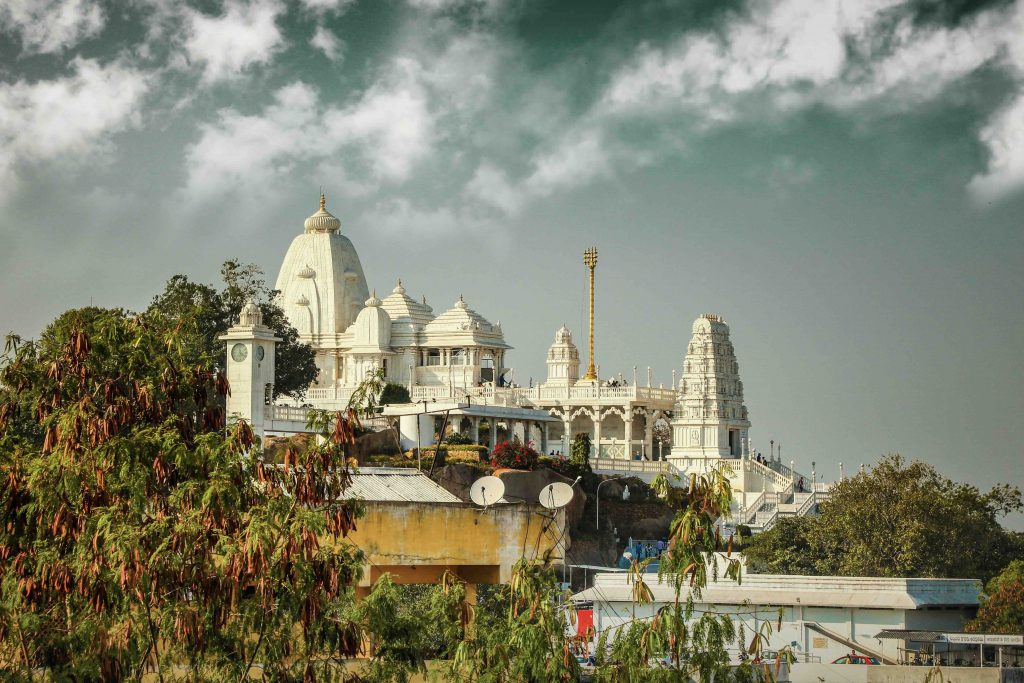Story: Ngo Quang Minh
Photos: Shutterstock
No trip to South India is complete without a stop in Hyderabad – a shining hub of modern technology, ancient architecture, and culture.
The cradle of the Indus-Ganges civilization, India is a land of countless vivid scenes that stir a range of emotions. Beyond the splendor of the Taj Mahal, the bustle of Old Delhi, the emerald waterways of Kerala, the allure of Kashmir, and the vibrancy of Chennai lies another unforgettable destination: Hyderabad. Capital of Telangana in southern India, this city boasts a modern face with its technology hubs and gleaming skyscrapers, yet remains deeply rooted in its centuries-old history, culture, and faith. Known as the City of Pearls, Hyderabad is renowned not only for its pearl trade but also for its unique harmony of Islamic, Hindu, and South Indian traditions.

Where three faiths converge
Hyderabad was founded in 1591 by Mohammed Quli Qutb Shah, the fifth ruler of the Qutb Shahi dynasty. Built along the Musi River, it soon became the capital of the Golconda kingdom, famed for its diamond mines. By the 17th century, Hyderabad was a major center of commerce, linking India with Persia and the Middle East. After the fall of the Qutb Shahi dynasty, the city came under Mughal rule and later fell into the hands of the Nizams of Hyderabad, once among the wealthiest dynasties in the world. The Nizams left a lasting legacy of palaces, mosques, libraries, and a vibrant cultural heritage. In 1948, following India’s independence, Hyderabad was integrated into the Indian Union.
Today, the city is both a living chronicle of centuries past and a soaring center of technology, resulting in its second name: Cyberabad. Even as one of India’s fastest-growing metropolises, Hyderabad preserves its old quarters, traditional bazaars, street food culture, and craft villages. Its cuisine is legendary, fusing Mughal and South Indian flavors. One standout dish is Hyderabadi Biryani, which blends long-grained basmati rice, marinated chicken or chevon, saffron, and caramelized onions, slow-cooked in a clay pot. When it comes to shopping, Hyderabad is a treasure trove of gems, with Laad Bazaar famous for its bangles and pearls.
What sets Hyderabad apart is its seamless blend of faiths, where Islam, Hinduism, and Christianity coexist in harmony. Hinduism, the city’s oldest faith, continues to shape its spiritual life as pilgrims gather at temples such as Birla Mandir and Chilkur Balaji. Introduced by the Qutb Shahi dynasty, Islam left a lasting imprint on Hyderabad’s art, architecture, and cuisine. The Charminar, Mecca Masjid, and Qutb Shahi Tombs stand as enduring testaments to Islamic-Persian grandeur. Christianity, introduced during the colonial period, brought elegant Gothic churches. This confluence of religions creates a sense of serenity and reflects the openness and grace of the people who live here.

A regal past in step with a technological future
The city’s most iconic landmark is the Charminar, a monumental gateway built in 1591 to commemorate the dynasty’s relocation of the capital and the end of a devastating plague. In Urdu, its name means “Four Minarets,” referring to its four 50-meter towers adorned with Indo-Islamic and Persian motifs. Inside, stairways spiral upward to higher levels, with each archway opening to one of the cardinal directions. More than four centuries old, the Charminar stands as a symbol of the state of Telangana, serving as a geographical and cultural anchor for Hyderabad. Surrounding it are the vibrant Laad Bazaar and the grand Mecca Masjid – the largest mosque in the state – constructed in the 17th century to accommodate 10,000 worshippers. Legend holds that Sultan Muhammad Qutb Shah, the dynasty’s sixth ruler, had each brick molded from soil brought from the holy land of Mecca. This act of devotion resulted in one of India’s most magnificent monuments and enduring pilgrimage sites.
Eleven kilometers from the city center rises Golconda Fort, once the capital of the Qutb Shahi kingdom. Perched atop a 130-meter hill and spanning four square kilometers, its 11-kilometer-long walls enclose a maze of smaller forts, palaces, halls, arsenals, stables, and reservoirs. The fort’s origins trace back to 1143 as a mud structure, later reinforced with bricks by the Bahmani Sultans and expanded by the Qutb Shahis between the 14th and 17th centuries. Its outermost ring features the Fateh Darwaza, or “Gate of Victory.” Within, its vaulted halls hold an acoustic marvel: a single clap at the entrance echoes up to the hilltop.

Centuries of history have shaped a city where the spirit of the East blends effortlessly with the modern pulse of the West, and past and present coexist. With its grand mosques and palaces, distinctive cuisine, and lively rhythm of everyday life, the City of Pearls remains an essential stop for anyone seeking the soul of South India.










